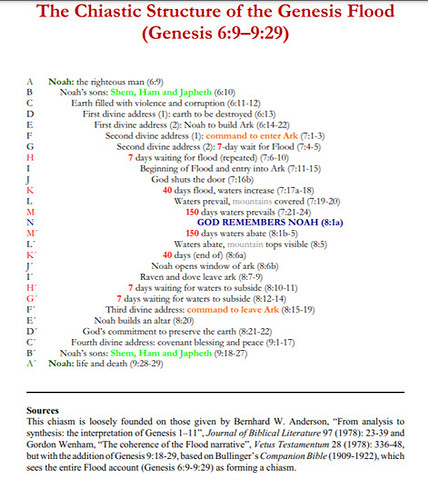I have been struggling with this for a while, but how can we tell from text itself that 1-11 is meant to not be taken in a literal sense? I feel like it is written in a really similar way as the rest book of Genesis is. We have a book of Revelation or Daniel which could be understood clearly only (I suppose) by interpretation, not just plain reading. What makes 1-11 so different from the rest of the book, or even from the rest of the Pentateuch?
One of the first steps is this.
Add of all the years that the story spans. Add in all the major chapters that show up in more than one chapter. How many years and big characters are mentioned? Excluding characters just as a sentence or so in a genealogy.
Then do the same with 11 other chapters in genesis, exodus, and so on.
I believe it comes up to that within genesis 1-11 it covers 25-33% of total years within biblical history.
I am sorry, I cannot understand what are you trying to say. Can you elaborate?
When you read genesis 1 and read all the way to chapter 11 you’ll see a lot of stories that includes time spans. If you get those timelines and add it up it comes up to roughly 2,000 years. Moses to Jesus is another few thousand years.
I don’t know the exact numbers because different people have different numbers.
At the lowest end genesis 1-11 takes up roughly 20-30% of the biblical history, to to around 50% of the biblical history on the higher ends. That means the same amount of years that happen in genesis 1-11 is almost the same amount of years that occur throughout the entire rest of the Bible.
This is kind of like asking “what sort of genre is this text?” Let’s look at a simple example that provide certain clues that we shouldn’t be reading this as a narrative.
This is hardly proof that this is not a narrative, and some people can easily try to reason that God just divinely matched the details to this chistic structure.
What about say, Genesis 1 then? Are there any similar sorts of literary structures to that text? Yes, several possibilities, with one example being the framework hypothesis.
Another interesting thing could be the fact that Genesis 1:1-3 begins in a similar way to many other, often older stories of beginnings. As Mark Smith summarizes in The Priestly Vision (p. 45):
“other creation narratives similarly open with [such] clauses…. Despite the length of such a sentence, it falls entirely in line with the openings of creation accounts from Mesopotamia."
If you want to see a more thorough summary of this I recommend Ben Stanhope’s book, (Mis)interpreting Genesis: How the Creation Museum Misunderstands the Ancient Near Eastern Context of the Bible (p. 57). There is a whole chapter devoted to interpreting the opening three verses.
So in summary, there are a lot of hints that the text isn’t meant to be read in a strictly, modern, historical sort of way. There are many more, but this is all that I have for now. In general, the sort of history that ancient historigraphers did is different from how we think of a list of summarizing chronological events in bullet point fashion and that might be a fruitful avenue to explore.
Some translations smooth over it, but in the Hebrew we have the six day sequence of creation in ch. 1, followed by one day in 2:4 that mentions things from various days of ch. 1. Likewise, ch. 2 has a considerable amount of activity in naming the animals that takes place within day 6 of ch. 1. Names in ancient Near Eastern culture have significance and doing the naming indicates authority. This naming is not just “cat bat rat dog hog frog”. The popular source criticism claim that a redactor threw together two incompatible accounts in order to try to keep everyone happy, and no one noticed the conflict until modern times when people got smarter, is not very likely. Rather, the accounts were seen as complimentary or harmonious in some way, and that points to at least one of the accounts not being chronological in intent. Although the seven days of creation are cited as a model for the sabbath in the law, there is also the sabbath year, and the Passover celebration does not take the same amount of time as the original event that it commemorates, either. Psalm 104 seems to be a meditation on Genesis 1, yet pays no attention to the sequence. Theologically, the main point is that all things are created by God, with a special role for humans as stewards under Him, not the details of timing and methods. Figurative interpretations were quite prominent in Jewish and early to medieval Christian thought, before scientific evidence had been examined. There is also evidence from other ancient Near Eastern sources of using a seven day sequence as a symbol for perfect completion, not talking about time. The grammar is a bit peculiar - it’s “day one”, “a second day”… not the usual way of talking about a week. The parallelism is a poetic touch; in general, the Bible makes more use of figures of speech than the modern pedantic historian or scientist. So it’s quite reasonable to suspect that the text is not focused on the scientific and historical issues.
This topic was automatically closed 6 days after the last reply. New replies are no longer allowed.
